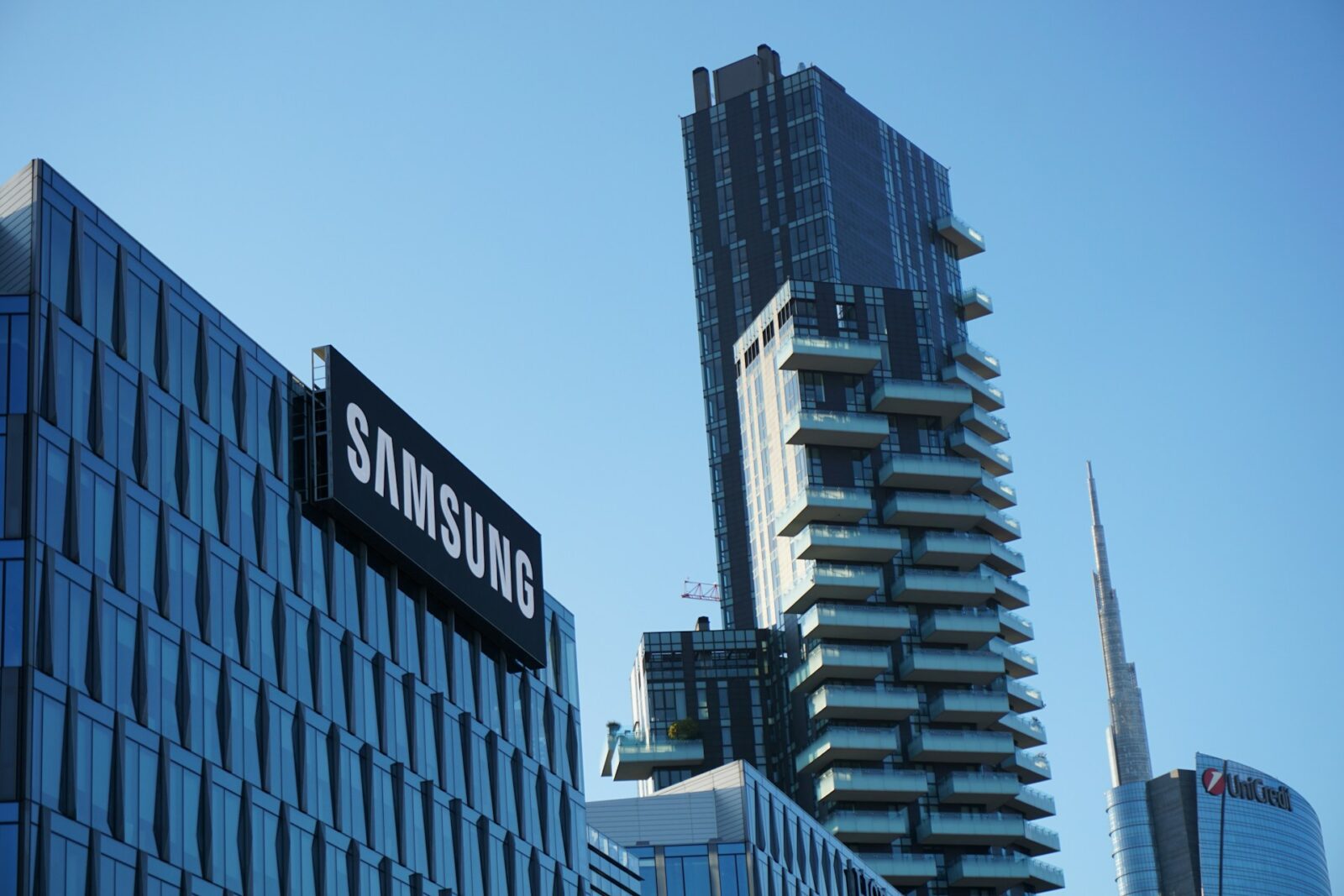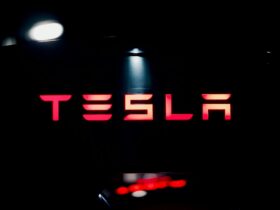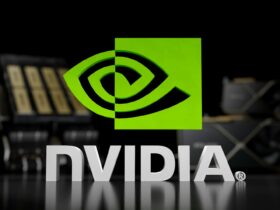A Breakthrough Moment for Samsung in AI Chips
Samsung Electronics Co. (KRX: 005930) has long been a global leader in consumer electronics and commodity memory. But in 2025, the battleground is shifting toward high-bandwidth memory (HBM), a crucial technology powering the world’s most advanced AI systems.
On Monday, Samsung shares climbed more than 5% to their highest level since August 2024, following reports that its 12-layer HBM3E chips passed Nvidia’s qualification tests. This marks a critical milestone that could finally allow Samsung to challenge SK Hynix and Micron in the high-end AI memory market.
With artificial intelligence accelerating demand for computing power, Samsung’s progress in advanced chips could redefine its competitive position — and investors are taking notice.
Nvidia Approval: Why It Matters for Samsung
Clearing the AI Supply Chain Bar
Nvidia, the undisputed leader in AI accelerators, uses HBM chips alongside its GPUs to train massive AI models, from ChatGPT to DeepSeek. Passing Nvidia’s qualification tests is seen as the gold standard in the industry.
Samsung’s successful HBM3E validation means:
- Its chips are now eligible for use in Nvidia’s AI hardware.
- It strengthens Samsung’s credibility in advanced semiconductor design.
- It reopens competition with SK Hynix, which previously dominated Nvidia’s HBM supply.
Investor Response
Following the news, Samsung stock surged, with foreign investors purchasing over $2 billion in shares in September. The rally reflects renewed confidence that Samsung can reclaim leadership in advanced memory.
How Samsung Stacks Up Against SK Hynix and Micron
| Category | Samsung Electronics | SK Hynix | Micron Technology |
|---|---|---|---|
| HBM3E Status | Reported to have passed Nvidia qualification on 12-layer HBM3E; initial 2025 volumes limited as rivals filled early orders. | Incumbent leader supplying Nvidia at scale; strong yields and volume execution across HBM3E stacks. | Ramping HBM3E shipments; gaining share with select accelerator programs and diversified customer base. |
| Nvidia Qualification | Market reports indicate qualification passed; formal, broad program ramps expected to phase in. | Established qualified supplier for multiple Nvidia platforms. | Qualified on key SKUs; expanding alignments beyond Nvidia, incl. other accelerator vendors. |
| HBM4 Roadmap | Approval on HBM3E boosts odds for HBM4 qualification; focus on higher stacks, bandwidth, and power efficiency. | Early mover advantage likely to carry into HBM4; tight integration with leading GPU roadmaps. | Targeting competitive HBM4 timing; leveraging packaging innovations and power/performance improvements. |
| Manufacturing Strengths | Scale in DRAM/NAND, advanced packaging, and broad capex; foundry synergies with advanced logic partners. | Deep HBM know-how and yields; focused capacity allocation to AI memory. | Operational discipline; fast ramps with high-mix customers; strong packaging ecosystem. |
| Key Risks | Execution & yield at scale after delays; initial share small; competition from entrenched suppliers. | Customer concentration with hyperscale AI cycles; cycle sensitivity if AI demand normalizes. | Share gains depend on timely qual wins; cyclicality and pricing pressure across memory. |
| Recent Catalysts | HBM3E qual reports; stock at YTD high; $16.5B Tesla foundry deal revived logic narrative. | Sustained HBM leadership; continued Nvidia/Hyperscaler demand strength. | HBM ramps plus diversified AI customer wins; packaging & power gains highlighted. |
| 2025 AI Memory Share (Qualitative) | Re-entering at the high end; share likely to build through ’25–’26 as volumes scale. | Leader at scale in ’25; high share in HBM3E shipments to top accelerators. | Share rising from a smaller base; improved mix with broader platform wins. |
| Broader Angle | Largest memory vendor; synergy with foundry, packaging, and consumer devices strengthens moat. | Pure-play memory strength with HBM focus enhances operating leverage in AI upcycle. | Balanced memory portfolio and capital discipline position it well for multi-year AI demand. |
| Notes: HBM = High-Bandwidth Memory. “Qualification” indicates platform approval; volume ramps depend on customer orders, yields, and packaging. Table reflects 2025 context and industry commentary. For information only; not investment advice. | |||
Catching Up With Rivals: SK Hynix and Micron
The HBM Race
- SK Hynix: Currently the market leader in HBM3E supply for Nvidia.
- Micron Technology (US): Expanding aggressively to challenge Korean players.
- Samsung: Historically the top memory maker, but faced delays in HBM development, raising concerns about its tech edge.
By securing Nvidia’s approval, Samsung narrows the gap and positions itself for a bigger role in HBM4 supply, the next-generation memory standard.
Analyst Outlook
Citigroup’s Peter Lee expects official confirmation of Samsung’s HBM approval by late September or early October, noting that investor confidence has strengthened after 19 months of product delays.
Goldman Sachs analyst Giuni Lee emphasized that passing Nvidia’s test is a sign Samsung can meet “the highest standard in the HBM industry” and raises the odds of future HBM4 qualification.
Samsung’s Strategic Moves Beyond HBM
$16.5 Billion Tesla Foundry Deal
In July, Samsung surprised markets with a $16.5 billion chipmaking partnership with Tesla, reinvigorating its foundry business. Once seen as lagging behind TSMC and Intel, Samsung’s foundry now has new momentum.
Commodity Memory Advantage
While AI chips dominate headlines, Samsung still leads in commodity memory (DRAM, NAND). Analysts expect supply shortages in 2026 due to surging AI demand, which could further lift prices and profits.
Financial and Stock Market Impact
Recent Performance
- Samsung stock is up ~20% in September 2025.
- The rally is driven by both HBM approval rumors and expectations of tighter memory supply in 2026.
- Investors are rotating into AI-related chipmakers, rewarding firms positioned for next-gen demand.
Global Funds Buying
International investors are showing renewed interest, pouring billions into Samsung’s stock. This signals global belief in Samsung’s AI-driven growth narrative.
Challenges and Risks Ahead
Despite the positive momentum, Samsung faces hurdles:
- Small Initial Shipments: Nvidia’s 2025 HBM orders are mostly filled by SK Hynix and Micron, leaving Samsung with limited immediate volumes.
- Execution Risks: Samsung must prove it can deliver high-yield production at scale, not just pass tests.
- Competitive Pressure: The memory industry is cyclical, and rivals are innovating fast.
- Geopolitical Factors: As AI supply chains tighten, U.S.-China competition may impact Korean chipmakers’ global role.
The Bigger Picture: AI Chips as the New Growth Frontier
The AI revolution is creating unprecedented demand for advanced semiconductors. HBM chips are critical to AI workloads, and only a handful of companies can produce them. For Samsung:
- Passing Nvidia’s tests is more than a technical milestone — it’s an entry ticket to the AI supply chain.
- Success with HBM3E could set the stage for HBM4 leadership in the coming years.
- Combined with foundry growth and memory demand tailwinds, Samsung could be on the cusp of a multi-year upswing.
Final Thoughts: Why Samsung Stock Deserves Investor Attention
Samsung’s reported HBM3E approval by Nvidia signals a turning point. While initial shipment volumes may be small, the validation itself is a major credibility boost for a company working to reclaim leadership in AI memory.
With a 20% stock rally this month, strong global fund inflows, and strategic wins like the Tesla foundry deal, Samsung is showing that it’s more than a consumer electronics brand — it’s a contender in the AI-driven semiconductor race.
For investors seeking exposure to AI, semiconductors, and global technology leadership, Samsung stock looks increasingly compelling. The road to HBM4 and beyond will determine just how far this Korean giant can climb.







Leave a Reply